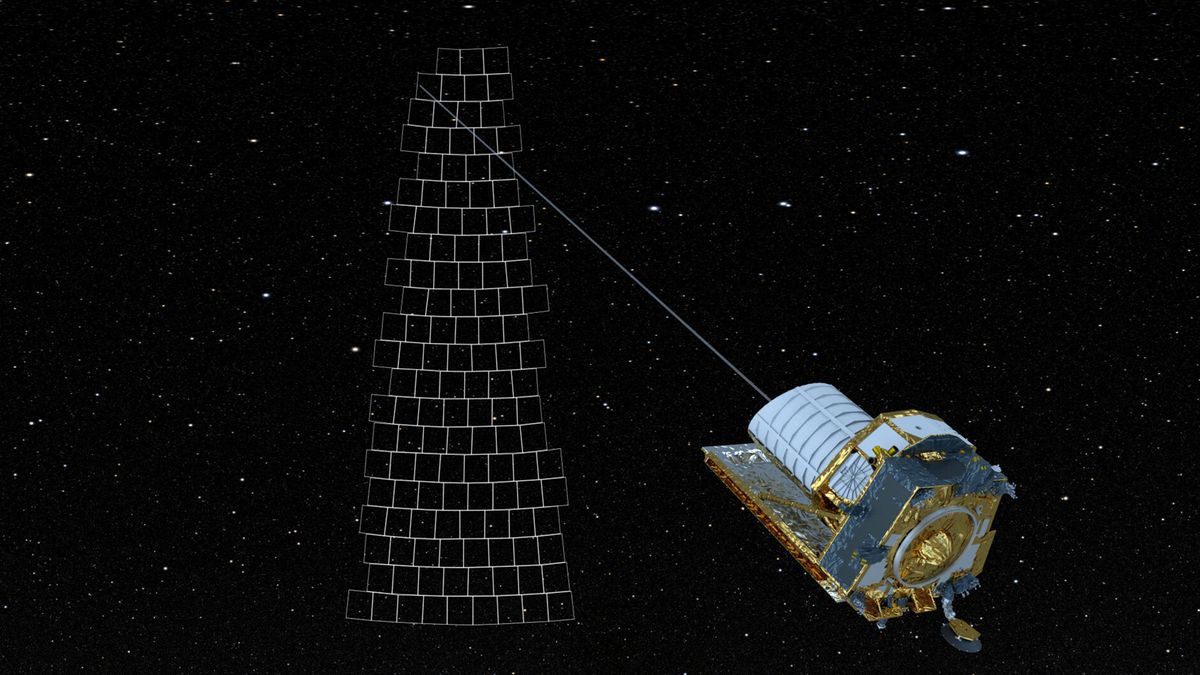The universe is expanding faster and faster, but not all scientists agree that dark energy is the cause. Perhaps, instead, our universe keeps colliding with and absorbing smaller ‘baby universes,’ a new theoretical study suggests.
Key takeaways
- The universe is expanding faster than before, and some scientists think it might be due to our universe merging with smaller ‘baby universes.’
- This new idea challenges the popular belief that dark energy is causing the universe’s rapid expansion.
- Researchers used a mathematical model to show that merging with other universes could explain the universe’s growth better than current theories.
- The theory also suggests that cosmic inflation, the rapid expansion after the big bang, might be due to our universe being absorbed by a larger universe.
- Upcoming data from the euclid and James Webb telescopes may help confirm if this new model better explains the universe’s expansion than the standard model.
Cosmological theories all agree that the expansion of our universe is occurring at an ever-accelerating rate, yet none of them can adequately account for this phenomena. A fascinating explanation has emerged from a recent theoretical study: maybe the reason our universe is growing is that it continually merging and swallowing “baby” parallel worlds.
Research on the cosmic microwave background—the remnants of the Big Bang—has shown that the universe is expanding more quickly than it did before. In order for this discovery to align with the primary theory of cosmic history, known as the Standard Cosmological Model, scientists believe that the expansion of the universe is propelled by a mysterious substance known as dark energy.
However, since this enigmatic energy source does not show up in any other manner, many astrophysicists are beginning to doubt its existence and investigate the prospect of finding a different explanation for the universe’s expansion.
The hypothesis that the universe’s expansion may instead be fueled by continual merger with other universes was put out by scientists in a recent paper that was published in the Journal of Cosmology and Astroparticle Physics.
“The main finding of our work is that the accelerated expansion of our universe, caused by the mysterious dark energy, might have a simple intuitive explanation, the merging with so-called baby universes, and that a model for this might fit the data better than the standard cosmological model,” lead study author Jan Ambjørn, a physicist at the Copenhagen University told LiveScience in an email.
Taking in cosmic “babies”
Although there has long been theories about multiples universes interacting with ours, this work creates a mathematical model to investigate the potential effects on the development of our world. Based on their calculations, the researchers concluded that merging with other universes should enlarge our universe, which our sensors may detect as the universe expanding.
Using their hypothesis, the scientists also calculated the universe’s expansion rate, and they found that their results fit the universe’s data better than the conventional Standard Cosmological Model.
The issue of cosmic inflation—the enigmatic super-rapid expansion that took place in the early stages of the universe—is likewise addressed by the authors’ hypothesis.
Scientists have previously suggested that “the inflaton,” a postulated field that fueled ultra-rapid growth in the initial milliseconds following the Big Bang, is to blame for this expansion. However, the authors of the current study hypothesize that the absorption of our young universe by a bigger cosmos might have been the origin of this extremely fast early expansion.
“The fact that the Universe has expanded … in a very short time, invites the suggestion that this expansion was caused by a collision with a larger universe, [that is] it was really our Universe which was absorbed in another ‘parent’ universe,” the authors of the report stated. “Since we have presently no detailed description of the absorption process, it is difficult to judge if such a scenario could take place in a way that would actually solve the problems inflation was designed to solve, but one interesting aspect of such a scenario is that there is no need for an inflaton field.”

According to the scientists, our newly expanded universe proceeded to crash with other “baby universes” after being swallowed, absorbing them as well.
While the authors’ theory helps us address several significant contemporary cosmological challenges, their hypothesis can only be verified by observable data. These basic issues may soon be answered by scientists thanks to the numerous experiments being conducted to investigate the features of the microwave background.
“We believe that observations from the Euclid and James Webb telescopes will settle which model is best describing the present time expansion of our Universe,” Tokyo Institute of Technology physicist Yoshiyuki Watabiki said to Live Science. “Our late time expansion of the Universe is different from the standard cosmological predictions.”

